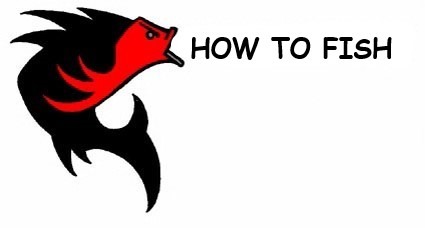There are countless hook styles and sizes available, sometimes covering whole walls of tackle shops, but many anglers pay little attention to matching the right hook to the type of fishing they do.
Aussie anglers are a pretty optimistic lot…
They tend to use much larger hooks than are needed for the job…hoping to catch that once in a lifetime monster…
…but this can mean they go home empty handed – even when the fish were there!
A noted Fly fisherman once told me “you’ve got a better chance of catching a large fish with a small hook than you have of catching a small fish with a large hook!”
He then went on to prove his point by catching a 2.3 kilo trout on a size 14 hook (as size 14 hook is smaller than the nail on your little finger!)
His point was that anglers across the country tend to use large hooks and this can mess up your “bait presentation”. You’ll hear me use this term, “bait presentation” a lot, it just means – how natural your bait looks in the water…picky fish won’t touch anything that looks different or behaves unnaturally.
I use small hooks, some of them very small, when I fish. The important thing is to match the hook to the bait…and the bait to the fish you are targeting.
So what do you look for in a hook?
…well, it must be sharp. These days chemically sharpened hooks are common. These hooks undergo a chemical etching process the takes all the rough edges off the point making it super sharp.
If you buy chemically sharpened hooks you are starting with the sharpest tool.
Other hooks that haven’t been sharpened should receive a bit of a touch up before you start fishing….
…this is an easy process and you can buy a hook sharpening stone to do this. I have one in my tackle box at all times.
This sharpener comes in handy even with chemically sharpened hooks because they become dull after hitting rocks and other stuff in the water. They might have started with a good point but eventually that wears off and you need a sharpening stone to deal with them.
The next thing to consider is size…
…and it does count… but bigger isn’t always better!
The standard for hook sizes gets a little confusing….
…for instance, a size 8 hook is smaller than a size 1/0 hook. The way it works is that any single number hook like a 12, 4 or 1 are smaller than hook sizes with 2 numbers like 2/0, 4/0 or 6/0.
To make it even more confusing – the larger the number of single number hooks, the smaller the hook…so a size 22 is tiny and a size 2 is much larger by comparision… and now to make it ridiculous… hooks with 2 numbers are the opposite. They get larger as the numbers get larger…so a 2/0 is much smaller than a 6/0….
Confused?
Yep, me too!
Anyway, I mainly use single number hooks unless I am out chasing large salt water fish like tuna, yellowtail kingfish or snapper.
My tacklebox carries the smaller hook ranges from the very smallest size 32 to the largest, size 1…and of these I mainly use size 14 to size 8.
The way hooks are described is pretty straight forward, the actual shape is called the “pattern”, and most patterns have these items…
- The “point” is the sharp end that connects with the fishes mouth (and sometimes the angler’s finger) – it has a barb to make sure it stays stuck in!
- The “bend” is the rounded bit leading away from the point.
The “throat” is distance from the point to the deepest part of the bend. - The “shank” is the straight bit leading away from the bend….
- …and the “eye” is the the circle at the top of the hook you tie the line to…
But wait, there’s more…
- The “gape or gap” is how wide the hook is- measured from the point to the shank….
- The “bite” is the height of the point- measured from the bend!
- The “guage” is the diameter or the hook’s wire.
- The “finish” is any special coating or colour applied to the hook.
This all might sound a bit ridiculous at the moment but it will count more as you improve you fishing…
…and if you’re a beginner I would stick to some standard hook patterns such as the Kirby, Aberdeen, Octopus and Baitholder...in fact, anything that looks like a regular hook!
So start with the smaller sizes, make sure the bait matches the hook size (always have the hook tip exposed) stay with the basic patterns and use line that matches your hook size (light line… small hook).
These are good starter hooks for anyone new to fishing.
